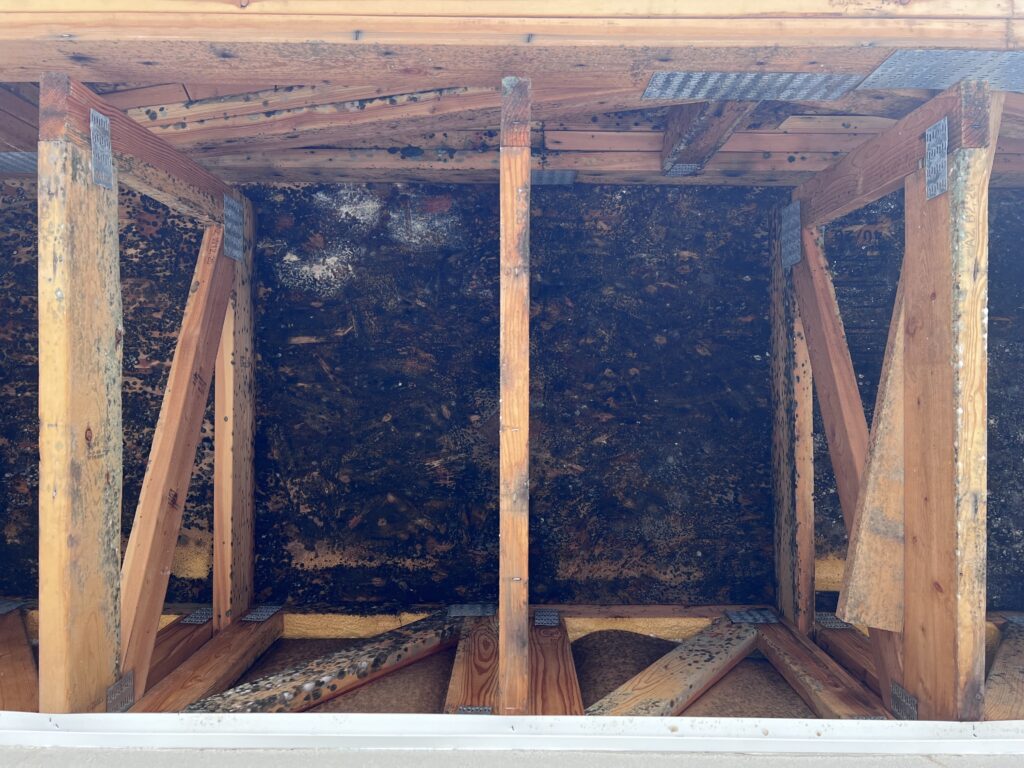It was a typical cheap rental apartment. No heater, poor air conditioning, and of course, mold.
I didn’t realize it at first. I don’t usually look at the ceilings of bathrooms, but when I walked in the day after I moved in, there was mold all over the ceiling. And it was black. My brain started rattling off questions. Is it dangerous? Will it make me sick? Can I wipe it off?
I didn’t want to touch it or even look at it, I mean it’s mildewy and gross. It was there when I moved in and I even made a note of it on my damage report. But, my apartment complex didn’t seem even slightly alarmed and never sent anyone to clean it.
I finally decided to bring it up to my apartment manager when I was moving out (yes, I lived with mold in my shower for 8 months), and she recommended we spray bleach on it, and then scrub it with a scrub brush. It worked, but little did I know that those are two things that you should NOT do when you find mold in your house.
So, let’s take my experience as a lesson. I’ve interviewed experts in the mold industry from Complete Restoration and have found some good-to-know info on mold, along with some do’s and don’ts when it comes to cleaning mold.
Is mold actually toxic?
Simply put, not really. Few kinds of rare mold can make you extremely sick, but it’s common to have some mold in the air. However, mold in high concentrations can definitely affect your health. Think about it this way – if you have a propane tank in your yard and it is slowly leaking propane, it’s not going to be harmful for you to breathe because it’s diluted with the fresh air around you. Now if you take that leaking propane tank into a small tight space like your shed or your car, now you’re breathing in lots of propane with little oxygen to dilute it. That’s going to start causing some serious problems quickly. It’ll give you a headache and make it difficult to breathe.
The same goes for mold. When a room in your house has a high concentration of mold, you’re putting your lungs and health at a higher risk. The more mold spores in the air, and the smaller space that you’re in, that’s when you’ll begin feeling negative symptoms.
What to do when you find mold.
First and foremost, it’s important that you call an expert to come take a look. It can be difficult to tell how much the mold has spread and what steps need to be taken without knowing the full extent of the situation. Experts have specific tools and knowledge to test and properly get rid of mold.
1. Do NOT scrub it.
When you scrub mold, it releases spores into the air, which you then breathe in. This is what can cause illness and other negative symptoms. Mold can also be tricky and while it may look like it’s only on the surface, it can actually grow on the paper on the other side of the drywall.
2. Do NOT put fans on it.
Mold feeds off water and air. When you put a fan on it, while it may seem that it would dry out the water, you are actually feeding the mold and pushing spores into the air. It may not visibly seem like it’s causing harm since you won’t be able to see the mold spores spreading in the air, however it’s dangerous for you to inhale these spores and will not removing the mold problem.
3. Do NOT spray cleaner directly on to mold
When you spray cleaning solution directly on to mold, it pushes air and cleaner onto the mold, which then again releases spores into the air. While some say to spray cleaner onto a rag first and then wipe off the mold, it’s best to contact a mold expert before taking any kind of action.
How to handle mold
The first thing to do is call an expert for mold removal. They can check out the contaminated area and let you know what further steps to take. Mold doesn’t spread quickly, but you can attempt to contain the area by shutting the door and limiting air flow to the rest of the house. However, it’s best to have an expert look at it first and then walk you through the next steps you’ll need to take.
Additional information
Why do I have mold?
Mold grows in damp environments. You may have poor ventilation in moist areas (such as a bathroom). Mold cannot grow without a wet environment.
What is “black mold”?
Black mold generally refers to a type of mold called Stachybotrys. While this mold can be dangerous in high concentrations and by inhaling spores, it is not inherently dangerous in small amounts and if properly removed. With continuous exposure to any high concentration of mold, health can be affected. It’s also important to note that
Is all mold toxic?
High amounts are not healthy for your body and your lungs. While there are a few kinds of mold that can pose a higher threat to your health, most molds are common and cause symptoms only in high quantities. It’s also important to note that not all mold is black. Mold comes in many different colors and on all kinds of surfaces.


